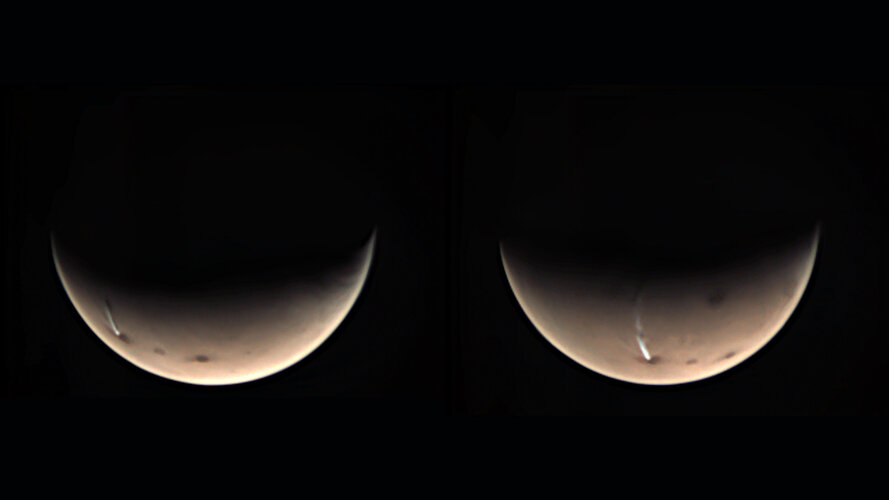
“To clear these hurdles, we used one of Mars Express’ secret tools – the Visual Monitoring Camera, or VMC,” says Jorge Hernández Bernal of the University of the Basque Country in Bilbao, Spain, lead author of the new findings and part of a long-term project studying the cloud’s dynamics.
Jorge and colleagues’ work demonstrates an exciting, and unintended, use for the VMC. Also nicknamed the Mars Webcam, the VMC has a resolution similar to that of a standard 2003 computer webcam. It was installed to visually confirm that the Beagle 2 lander had successfully separated from Mars Express back in 2003 – after which it was switched off. Several years later, the camera was reactivated and used to gather images of Mars for public engagement and outreach activities, but remained unused for scientific research.
“However, recently, the VMC was reclassified as a camera for science,” adds Jorge. “Although it has a low spatial resolution, it has a wide field of view – essential to see the big picture at different local times of day – and is wonderful for tracking a feature’s evolution over both a long period of time and in small time steps. As a result, we could study the whole cloud across numerous life cycles.”
The research team combined the VMC observations with those from two other Mars Express instruments – OMEGA and HRSC – and from several other spacecraft, namely NASA’s Mars Atmosphere and Volatile Evolution (MAVEN), Mars Reconnaissance Orbiter (MRO), and Viking 2 missions, and the Indian Space Research Organisation’s Mars Orbiter Mission (MOM). “We were especially excited when we dug into Viking 2’s observations from the 1970s,” says Jorge. “We found that this huge, fascinating cloud had already been partially imaged that long ago – and now we’re exploring it in detail.”



